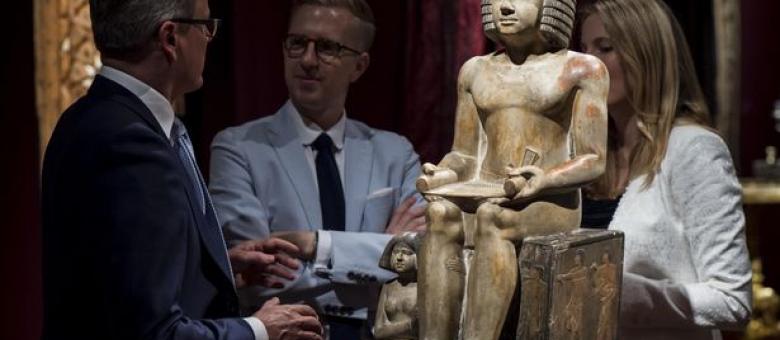
News

Sale of Sekhemka statue at Christie’s - ICOM CIPEG expresses concern
“Museum collections are held in public trust and may not be treated as a realisable asset. Money or compensation received from the deaccessioning and disposal of objects and specimens from a museum collection should be used solely for the benefit of the collection and usually for acquisitions to that same collection.”
ICOM Code of Ethics for Museums, § 2.16
Advocating for ethical conduct by museums and museum professionals, ICOM CIPEG cites the ICOM Code of Ethics for Museums, and particularly its article 2.16 on the “income from disposal of collections,” calling on the Northampton Borough Council (UK) to abandon the sale of the Sekhemka statue at Christie’s London this Thursday 10 July, 2014. ICOM joins ICOM CIPEG’s statement and supports the Egyptian Ministry of Antiquities’ call to “stop the sale on the grounds that it goes against the Council’s ethics.
This 4,500-year-old Egyptian painted limestone statue depicts Sekhemka, the Pharoah’s inspector of scribes. The sculpture was “originally acquired by the 2nd Marquess of Northampton during his travels in Egypt in 1849-50 and was given to the Northampton Museum either by the 3rd or 4th Marquess of Northampton prior to 1880”, according to a Christie’s press release. ICOM is also concerned that the sale of the statue, estimated between 5 and 7.5 million euros, according to the same press release, may result in an increase of illicit excavation and trafficking of antiquities in Egypt, an area already exposed to such risks. The fight against illicit trafficking in cultural goods is one of ICOM’s priorities and one of its most recent initiatives is the ICOM’s International Observatory on Illicit Traffic in Cultural Goods.
Since the 2011 uprising, ICOM has been following the events in Egypt closely. In 2011, ICOM published an Emergency Red List of Egyptian Cultural Objects at Risk as a tool to disseminate information and raise public awareness of the fight against the illicit trafficking of cultural objects. ICOM’s Disaster Relief Task Force also reported on the burning of the Institut d’Egypte in December 2011. An ICOM/UNESCO/Blue Shield emergency damage assessment mission was also carried out from 30 January to 2 February, 2014, following a car bomb that caused extensive damage to the building that houses both the Islamic Museum and the National Library of Egypt at Bab el-Khalq Place. ICOM is currently coordinating an international museum relief effort to assist the two institutions. Most recently, in June 2014, ICOM’s International Observatory on Illicit Traffic in Cultural Goods conducted a mission of experts in Cairo which confirmed the urgent needs of this vulnerable region.
Statement from CIPEG, the International Committee for Egyptology in the International Council of Museums on the sale of the statue of Sekhemka
The ancient Egyptian statue of the official Sekhemka, part of the collection of Northampton Museum and Art Gallery, which is owned by the Northampton Borough Council, is about to go on auction at Christies‘s in London on July 10, 2014 with an estimate of between 5 and 7.5 Million EUR. The council has announced that it has agreed to share the proceeds with the Marquess of Northampton, whose ancestor donated the statue to the museum, and to whom, under the terms of the original donation, the statue would revert in the event of the Museum no longer wishing to possess the piece. The council has stated that its share of proceeds from the sale will go towards a GBP 14M (18M EUR) extension of Northampton Museum and Art Gallery.
The sale of artifacts to pay institutional expenses is strictly against the ethical codes of national and international heritage bodies. The ICOM Code of Ethics for Museums clearly states:
2.16 Income from Disposal of Collections Museum collections are held in public trust and may not be treated as a realisable asset. Money or compensation received from the deaccessioning and disposal of objects and specimens from a museum collection should be used solely for the benefit of the collection and usually for acquisitions to that same collection.
CIPEG is concerned that, as a consequence, a well-known masterpiece of Egyptian art may disappear into a private collection, making it inaccessible to the general public, students, and scholars. CIPEG urges the Northampton Borough Council to abandon the sale of the statue of Sekhemka, and thereby to set an example of ethical behavior on the part of a public institution which acts as custodian for objects of world cultural importance.
09 July 2014
Dr. Gabriele Pieke
Chair of CIPEG / ICOM





